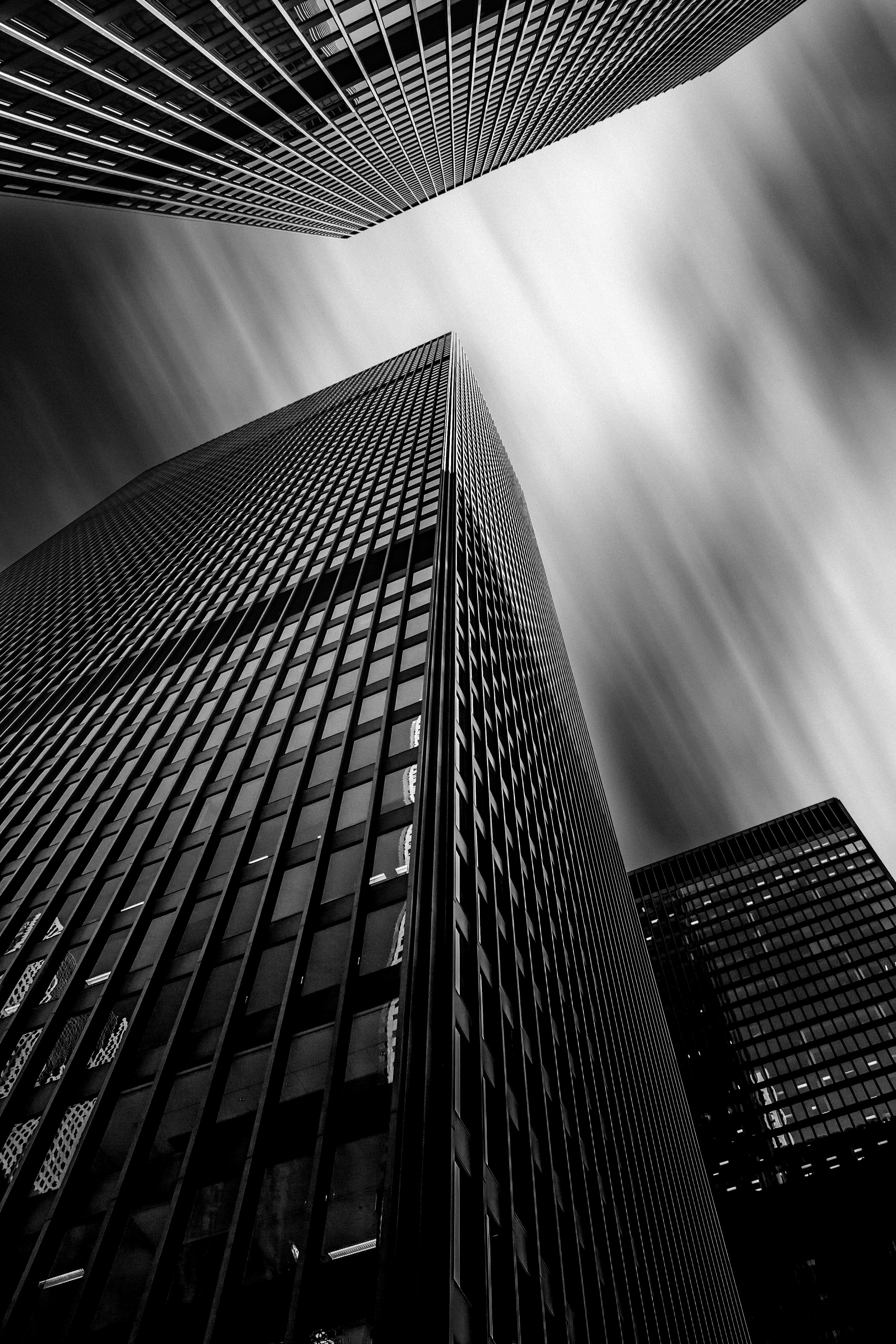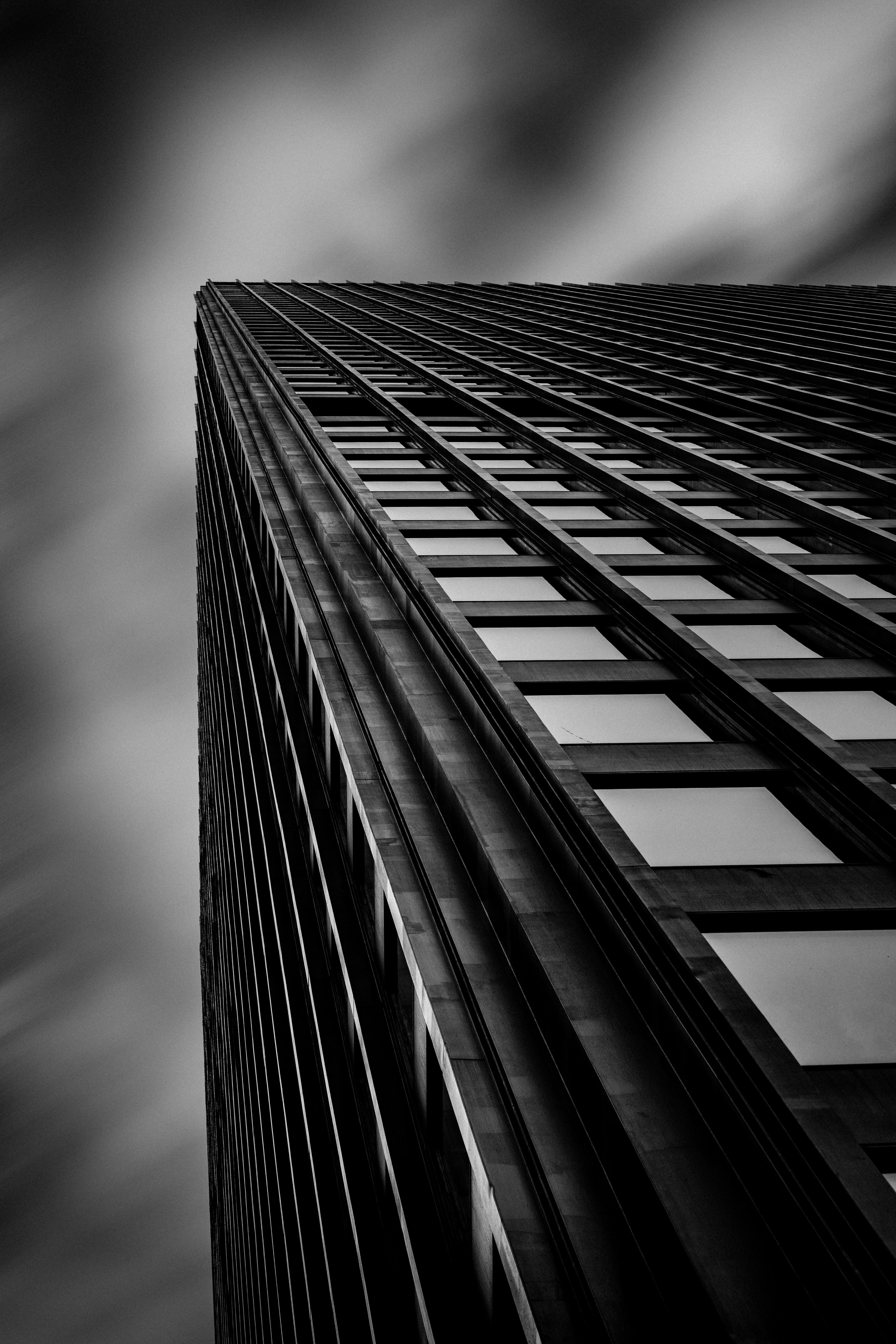LANDSCAPES OF MODERNITY
These photographs are part of a larger series, which I have worked on over the past 15 years. With these images, I attempt, in part, to translate some of my academic work on environmental philosophy into visual-photographic form, an effort to express my ideas through art rather than scholarship alone. This form of urban-architectural photography is my effort to build a personal visual record of the so-titled "Anthropocene", which I take to be a descriptor for the period of late-stage modernity, a period wherein human constructs begin to overpower and eclipse nature itself, i.e., “nature” as that which was previously wholly self-sustaining, self-generating, self-regulating and “pristine”. I urge the viewer to reflect on the contemporary experience of living in extensively built-up, "artificial", geometrically arranged spaces. I offer these photographs in the hope that you will feel compelled to consider the uncanny aspects of our "modern" dwelling spaces, especially our urban spaces and the buildings that surround us: namely, that they are staggeringly beautiful and yet, at the same time, brutal and oppressive. We tend to experience this kind of mixed reaction even just in confronting the sheer, mass scale of the buildings around us: for example, their overbearing, absolute density relative to our bodily stature as vulnerable individuals.
With my photographs, I allude to the meaning behind the encounters we have with such vast, massive objects that are, moreover, of our own making. I’m attempting a kind of photographic-phenomenological account of the experience of being a contemporary urban dweller. The great advantage of photography, here, is that it concentrates the mind. In contrast to simply walking about in the downtown core of any large metropolis, where we are constantly distracted by a cacophony of sights, sounds, smells, and so on … photography allows us to contemplate the bare essentials needed when we try to wrap our minds around such colossal artefacts, and the very difficult questions that are raised alongside them.
The central idea behind "the landscape of modernity" is this: whereas once, at some point in our "pre-modern" past, we experienced nature through encounters with its many varied, spontaneously generated objects, today we confront spaces that are almost entirely artificial. In contrast to the ways in which we experienced our world in the past, today, everywhere we look, we encounter only that which we ourselves have made; only that which we have, in one way or another, conceived and constructed. Put differently, everywhere and anywhere we turn, we now encounter only ourselves.[*] As such, we might say that humanity no longer dwells in the world as such, but rather within our own creations … only within the “human interior”, as it were. One might describe this as a state either of narcissism or a form of solipsism … but either way, even if the latter assertions were rejected, it is more difficult to deny that even just the astounding, imperious scale of the constructs that surround us tends to induce a sense of suffocating claustrophobia in many of us.
There’s more to be said about the contrast between the past and the technological present. Our ancestors lived in spaces pervaded by endless natural landscapes, by mountains and valleys, by open skies, by wide, ever-expansive horizons, by bright stars at night, and so on. They were surrounded by spontaneous, self-generating, self-sustaining entities, i.e., by natural objects ... in essence, by an unbound natural world. Conversely, in this late-stage industrial era, our visual landscapes are now largely colonized by massive artificial structures placed inside narrow geometric arrangments; and by constricted, occluded and disrupted skies above. Today, we are confronted and enveloped by colossal, cuboid monoliths, by narrow skies that are crisscrossed by cables and construction equipment and airliner flight paths (etc.) … and by stars that have been disappeared and replaced with tiny square windows emitting artificial light. In my photographs, I aim to present a visual narrative concerning all of this … this radical transformation that we have experienced in our ways of subsisting in the world. Simply put, I am trying to show what technocratically colonized human habitats look and feel like; how the urban geometrics within which we find ourselves are now virtually inescapable; and how the geometric arrangement of the monolithic structures around us have themselves come to shape our perceptions of the world as a whole, such that we end up seeing things “geometrically” even when we’re “outside” urban settings. (Hence, it’s not surprising that so-called “landscape photography” always ends up following certain pre-determined rules of “composition”, etc. … as if, through the act of photography, the “natural” landscapes we encounter have to be re-shaped and re-made to suit the minds of the urban dweller … or, simply put, it’s as if the “natural” landscape must first be tamed, organized and constricted in order to be made aesthetically palatable.)
At some point, we come to realize that, when it comes to the human habitat, all spaces, even the most elementary spaces, shall inevitably be colonized by artifice, i.e., by human-made constructs. And, conversely, no spaces shall remain untouched, or otherwise unmodified or otherwise free from encroachment, or mutilation. No natural spaces and no natural objects shall be left to be spaces or objects that simply exist - or that simply are - things simply in and for themselves. Indeed, these are the core axioms of the“Anthropocene”, as I understand it: all space, even the most rudimentary, shall be colonized; no space, however elementary, shall be left uncolonized or otherwise untouched.
I do not mean to suggest that such large-scale developments are in all respects negative in character. But I do hope that the viewer will react to these photographs - as do I - with a sense of awe, astonishment and veneration, mixed together with a sense of loss and sadness (that is perhaps difficult to articulate), as well as a sense of urgency. These massive artefacts that now surround us everywhere are, of course, truly astounding, spectacular, breathtaking and, at many moments, even breathtakingly beautiful. And yet, they are also severe and oppressive, and they serve to conceal alternate life possibilities; they constrain our (visual and intellectual) imagination and deprive us of opportunities to experience and live in the world in ways different to those that are predominant in modern life. As such, contemplating these images - I hope - invokes both awe in beauty and, at the same time, some inner, conscientious resistance against that vast apparatus of modernity that has, in the first place, erected these overwhelming, all-encompassing edifices that now serve both as our dwelling environs and, at once, as objects of confinement and delimitation.
[*] Footnote: Here, I deliberately echo the language used by the infamous philosopher, Heidegger, in his essay, “The Question Concerning Technology”, where he writes: “Meanwhile man […] exalts himself to the posture of lord of the earth. In this way the impression comes to prevail that everything man encounters exists only insofar as it is his construct. This illusion gives rise in turn to one final delusion: It seems as though man everywhere and always encounters only himself.” (The Question Concerning Technology, and Other Essays, p. 27)





























